QUALITY & FLAVOR

HOW TO TASTE TEA
The best way to learn about tea (aside from reading this article, of course!) is to taste tea. Unlike the strong flavors often associated with coffee, flavors found in tea are often more elegant and gentle. Just as it takes time to fully appreciate the nuances in fine wine, your palate for gourmet tea will develop and expand with practice. We've explained the tasting process below:
CUPPING TEA
Tasting or "cupping" tea (as industry professionals call it) is the assessment and comparison of different teas to determine quality, taste, aroma, briskness, body and color.
THE COMPLETE EXPERIENCE
Cupping tea is essentially taking the experience of drinking tea one step further; instead of simply lifting the cup to your mouth and swallowing while you think about your grocery list or what needs to be done at work, clear your mind and devote full attention to your senses; observe the complete experience of brewing the tea from start to finish. What do the leaves look and smell like before you brew them? How does the color change in the cup as the leaves steep? How does the texture of the tea feel in your mouth?
COMPARE AGAINST REGION
Teas grown within the same region have characteristic flavor profiles that allows you to compare the quality and character between flushes, estates and styles. When tasting teas, it is important to compare them only against teas from the same growing region, as there are characteristics achieved in some regions that cannot be replicated in others.

Tasting or "cupping" tea (as industry professionals call it) is the assessment and comparison of different teas to determine quality, taste, aroma, briskness, body and color.
 Colorful Cups of Tea
Colorful Cups of TeaUSE ALL SENSES
Although taste and smell are the most obvious, touch and sight also play a part in the experience of flavor.
PHYSICAL MOUTH-FEEL
Our sense of touch impacts how we perceive flavor. For example, chocolate just wouldn't be the same without the creamy texture and melt-in-your-mouth sensation. Notice there are differences in the physical feeling between between juice and carbonated soda, between apple juice and apple cider, between smooth pudding and crunchy cookies or between the burn of jalapeno and the cool of menthol.
Different physical sensations can also be found with tea. As you take your first sip of tea, pay attention to how it feels in your mouth. For example, certain teas are thick and malty, some are velvety and smooth, while others may have a thin, light texture. There are also differences in the physical feeling based on the temperature of the tea, or between hot and iced tea.
APPEARANCE AND COLOR
The liquid produced by the tea leaves (your cup of tea) is sometimes referred to as the tea's liquor. When appreciating a tea's liquor, pay attention to its color and clarity.
You can even evaluate the appearance and color of the tealeaves both before and after they have used to brewed tea. How do the leaves change after being infused in water? Have they expanded in size? In essence, proper cupping is based on an understanding of the total presentation of the tea leaf.
Our sense of touch impacts how we perceive flavor. For example, chocolate just wouldn't be the same without the creamy texture and melt-in-your-mouth sensation.
Different physical sensations can also be found with tea. For example, certain teas are thick and malty, some are velvety and smooth, while others may have a thin, light texture.
STEP 1: THE FRAGRANCE
SMELL BEFORE TASTE
First, before you even taste a cup of tea, take a deep inhale and formulate an initial impression based soley on the tea's fragrance. Sit back and contemplate what you experience. Don't try to "taste" the tea yet, concentrate only on what you smell. Does it have an enticing aroma? Can you describe what you smell? You may even wish to smell the wet tealeaves, after you remove them from the water. This is an often-overlooked part of the tea tasting experience.
THE IMPORTANCE OF FRAGRANCE
Why is the fragrance so important? Keep in mind that a good portion of taste comes from our sense of smell. Have you ever tried desperately to detect flavor from a food or beverage when you had a terrible cold? You probably tasted very little, if anything at all. Taste buds can only differentiate between 5 basic tastes: bitter, salty, sour, sweet and umami (savory) while our sense of olfaction, or smell, is capable of detecting over 10,000 different odors. Our sense of smell is so powerful that when you smell skunk you are smelling 0.000,000,000,000,071 of an ounce of scent. However, smell is often ignored due to the overwhelming demand of our other senses.
EXERCISE YOUR SENSE OF SMELL
With practice, you can learn to focus on your sense of smell. Try this exercise: take mental notes of scents throughout your day ... whether you are cutting into an apple, eating an almond, stepping outside after a rainstorm … just about anything. This will help you analyze and detect the subtleties of scent when cupping tea or even tasting wine.
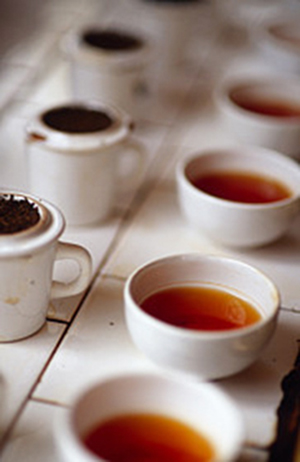 Professional Tea Tasting
Professional Tea TastingTIP: take mental notes of scents throughout your day ... whether you are cutting into an apple, eating an almond, stepping outside after a rainstorm; just about anything. With practice, you can learn to focus on your sense of smell. This will help you analyze and detect the subtleties of scent when cupping tea or even tasting wine.
STEP 2: THE FLAVOR
SLURP THE TEA
Next, slurp the tea loudly so that the liquid sprays throughout the mouth. Professional tea tasters slurp the tea and quickly swish it around their mouth to get a sense of the tea's body and flavor profile. They then spit out the tea as they quickly move down the line, tasting several teas one after another. Although you will likely want to skip the spitting step, slurping the tea allows the flavor to fill the mouth, striking all areas of the tongue as well as the bottom of the nasal cavity.
What is the initial taste--or first impression--as the flavor awakens your senses? Slosh the tea around in your mouth and draw in some air … even if you look funny doing it! Odor molecules can also reach olfactory receptors in your nose from the back of the nasal cavity (as opposed to the front of the nasal cavity through inhalation). This means we can still perceive smells from foods and liquids within our mouths. Does the fragrance or flavor remind you of anything? How does it make you feel? Examine the tea's body and texture. Is it light or rich? Smooth or harsh?
FOREGROUND, MIDDLE GROUND AND BACKGROUND FLAVOR
Tea is often described as having a foreground (top note), middle ground, and background flavor. These three flavor dimensions come together to create the tea's flavor profile. Does the tea taste the same the entire time it is in your mouth, or does it start with one flavor, transform into another, and finally end on a different note? What about the quality of flavor? Is it pleasantly crisp or smooth and soft? Does it taste fresh? Are the flavors clearly defined? Does the bitter component complement the other flavors (making for a successful overall flavor) or does bitterness dominate the taste or spike at a certain point?
As you swallow, focus on the aftertaste (the flavor that remains in your mouth). How long did the taste linger? Was it pleasant?
STEP 3: THE OVERALL EXPERIENCE
After tasting the tea, take a moment to value its overall flavor and balance. What overall experience does this tea leave behind?
DESCRIPTIVE WORDS
It is helpful to record your impressions of each tea. Avoid using words like "good" or "gross" these are fairly unspecific and will not help differentiate teas afterwards.
After trying many teas you will notice similarities and differences. Sometimes a certain smell will be very strong with underlying hints of other smells. Take your time. By labeling a tea’s flavor aroma you will probably remember it better. The more different teas you try, and the more attention you pay to each tea, the better you will become at ascertaining and describing each tea's characteristics.
MENTAL DICTIONARY
As with wine, Tea Tasters recommend compiling a mental dictionary of different tastes and smells. For example, what is the difference in fragrance and flavor between canned and fresh pineapple? Dark and milk chocolate? Honey and sugar? Although there are similarities to each flavor above, there are also differences. Learning to appreciate the subtle differences in all foods will help you hone your palate. With experience, you'll notice that your depth-of-taste expands.

It is helpful to record your impressions of each tea. Avoid using words like "good" or "gross" these are fairly unspecific and will not help differentiate teas afterwards. By labeling a tea’s flavor aroma you will probably remember it better.
The more different teas you try, and the more attention you pay to each tea, the better you will become at ascertaining and describing each tea's characteristics.
| Aftertaste | The "shadow taste" or "finish" that remains in the mouth after swallowing. |
|---|---|
| Apricot | A flavor suggestive of the fruit. Certain white and oolong teas may develop a tender, mild taste on the tongue reminiscent of apricots. |
| Aroma | An attractive smell sometimes referred to as "nose" or "bouquet." High grown teas, such as Darjeeling and many oolongs, are prized for their distinctive aroma. When you taste a tea, make note of the quality and strength of the aroma. |
| Aromatic | A pronounced, complex fragrance. |
| Astringency | The lively, pungent quality that produces a drying sensation on your tongue or gums. Comparable to the dryness of wine. This is not to be confused with bitterness. |
| Bakey | An unpleasant taste caused by using temperatures that are too high during "firing" (the process of drying the tealeaves), which can drive out too much moisture. |
| Balance | A subjective term used in tea evaluation. A tea in which all aspects of flavor work together is said to be "in balance." |
| Big | Robust or full-bodied in flavor and aroma. |
| Biscuity | A pleasant taste resembling fresh baked bread. Sometimes found in Assam teas. |
| Bite | An astringent or tangy quality. |
| Bitter | A subjective tasting term referring to a sharp, acrid or unpleasant feeling on the taste buds along the sides of back of the tongue. If the bitterness is overwhelming and masks all other flavors, this can be a flaw in the tea itself or a result of over steeping/incorrect brewing. |
| Body | The sensation of how the tea liquor feels in the mouth. This term refers to the viscosity, thickness, consistency, weight or texture. A tea is described as having light, medium or full body. A tea's body will vary according to type and region. |
| Bouquet | The complex fragrance in fine or floral teas. |
| Brassy | An unpleasant, bitter metallic taste indicating improper withering of the leaf. |
| Bright | A lively, aromatic, uplifting flavor. The tea's appearance can also be described as bright if the liquor looks lively, clear, luminous and sparkling rather than dull and flat. |
| Brisk | A vivacious, slightly astringent taste as opposed to a flat or soft flavor. This describes the lively quality of an infusion. |
| Burnt | Over-firing of the leaf resulting in an unpleasant taste. |
| Buttery | A rich heaviness in the mouth. |
| Character | The distinct qualities of the tea, often specific to the region where the tea was grown. |
| Chocolate | A rich, deep, flavor reminiscent of chocolate. Found in some oolong and black teas. |
| Citrus/Lemon | Describes tea with subtle citrus fruit undertones. |
| Clarity | A term for the absence of cloudiness in a tea's liquor. |
| Clean | The quality of a thin, fresh flavor that finishes smooth and has nothing unfavorable about it. |
| Color | The color of the tea's liquor. This varies depending on the type of tea. |
| Complex | A multidimensional aroma or flavor profile. |
| Course | An undesirable harsh, biting, bitter taste. This can either be a flaw in the tea or a result of over steeping or incorrect brewing. |
| Crisp | A clean and fresh characteristic that is sometimes tart; not soft. |
| Deep |
Having layers of complexity or richness. |
| Delicate | Restrained flavors that are neither strong nor intense. |
| Distinctive | A tea that is markedly different from other teas and sets itself apart with refined character qualities. |
| Dry | A tea that finishes parched or dehydrated in the mouth; not sweet. |
| Dull | A liquor that lacks a lively, bright character in either taste or appearance. Flat or lackluster. |
| Earthy | Describes an elemental character of some teas likened to the smell of damp, forest soil. This is a natural and desirable trait of tea from certain regions, or if it is unpleasant, it can indicate improper storage. |
| Elegant | Gentle, well-rounded and smooth. |
| Even | Uniform appearance and size of the leaves. |
| Fine | A tea of exceptional taste and quality. |
| Flat | Lifeless flavor that lacks briskness and body. Soft. This can be the result of tea that is old or has been stored improperly. |
| Flinty | A dry, mineral flavor. |
| Flowery | An exceptionally aromatic character suggestive of flowers such as jasmine, orchid or rose. This can either be a natural trait of the tealeaves themselves, or as a result of scenting or blending the tealeaves with flowers during production. Good Darjeelings and some oolongs have this trait. |
| Fresh | An uplifting, lively, flavor. Opposite of stale |
| Fruity | Flavor nuances similar to ripe fruit. Sometimes found in oolong and black teas. Tea can have flavor notes that suggest peaches, apples, pears, grapes, raisins, currants, figs and more. Also describes fruit flavored teas. |
| Full | Tea possessing color, strength and body as opposed to being empty or thin. |
| Full-bodied | Indicates strong character or mouth feel. |
| Grassy | A bright, strong flavor and aroma reminiscent of fresh-cut grass, herbs or vegetables. A desirable trait found in steamed green teas. |
| Hard | Tea that has a penetrating and strength or sharp flavor (sometimes desirable). |
| Harmonious | A perfectly balanced flavor in terms of all of its components. |
| Harsh | A negative characteristic describing a bitter, unpleasant or offensive taste sensation. This can also describe an overabundance of one specific flavor. |
| Heavy | Tea that possesses a thick, strong liquor with depth of color but is lacking in flavor or briskness. |
| Herbaceous | An herbal aroma or flavor reminiscent of herbs, leaves or plants. |
| Honey | A sweet aftertaste or a silky, nectar-like texture. |
| Jasmine | Tea that has floral notes of jasmine, usually a result of added jasmine flowers or a traditional scenting process during production. |
| Length | A long-lingering taste that remains in the mouth after swallowing a sip of tea. |
| Light | Indicating a thin character, in terms of texture and weight on the tongue. |
| Malty | A desirable, hearty malted barley taste found often in Assam tea. |
| Mellow | Tea leaves which have matured well, producing a harmonious, well-balanced, smooth flavor. |
| Muscatel | Rich flavor like that of muscat grapes. This is an exceptional characteristic found in high quality Darjeeling tea. |
| Nutmeg | A characteristic often associated with Darjeeling teas that is mild in the first flush and more pronounced in the second flush. |
| Nutty | Attribute of some teas (such as some pan-fired green teas or certain black and oolong teas) that suggests the roasted aroma of hazelnuts, almonds, roasted nuts, etc. |
| Orchid | A taste nuance (sometimes found in high quality oolong or green teas) that resembles the fragrance of fresh blooming orchids. |
| Pale | Liquor that does not have depth of color, but may still have a nice flavor profile. Darjeeling is a good example of this, because its liquor is naturally lighter than other black teas. |
| Peppery | Spicy texture on the tongue. |
| Port | A flavor found in some teas that is reminiscent of the rich, sweet, grape flavors found in dessert wines. |
| Pungent | A bright liquor that has a pleasant, pronounced briskness and a desirable, strong, astringent flavor. This is a desirable quality, but must be well balanced. |
| Refined | Harmonious, elegant, and well-balanced. |
| Rich | A pleasantly thick and mellow flavor. |
| Round | A full, smooth-tasting flavor. |
| Short | A too-brief taste or finish that ends abruptly after swallowing. |
| Silky | A smooth, graceful texture quality. |
| Simple | Flavors and aromas that have only a single layer of sensation; not complex. |
| Smokey | Refers to the flavor a tea acquires from being "fired" (dried) over smokey flames, imparting a woodsy or smoked flavor. |
| Spicy | A fragrance or flavor reminiscent of spices like cinnamon, black pepper or clove. Can be a natural attribute of the tealeaves themselves, or a result of added spices in the case of blended teas. |
| Stale | Tea that has an unpleasant, flat, lifeless or "off" taste because it is old or has been stored in damp conditions. |
| Sweet | Free from excessive acidity. A pleasant flavor or aftertaste on the tip of the tongue; suggestive of honey, sugar or licorice root. |
| Tannin | A natural substance found in plants that imparts a puckery mouth feel and produces the structure and texture in many teas. |
| Tart | An intensely sharp sensation along the sides of the tongue. This can be a positive or negative trait depending on the type of tea and the intensity. For example, hibiscus leaves are prized for their natural, exceptionally tart flavor. |
| Thick | Tea that has good body as opposed to being thin. Black teas often produce a thick liquor with a heavy, dense texture quality. |
| Thin | Tea that lacks body. This is not necessarily a bad trait, as certain teas (such as Darjeeling or some white teas) are celebrated for their thin yet flavoury liquors. However, teas from Assam should never have a thin liquor. |
| Tippy | Having a consistent amount of golden or silver color on the tips of the leaves, indicating fine plucking. |
| Vanilla | Having a sweet flavor suggestive of vanilla beans or vanilla extract/flavor. |
| Vigorous | A firm, flavor-forward quality. |
| Weak | A tea lacking in character. |
| Weedy | A flavor suggestive of wet hay or straw. |
| Winey | A mellow, complex character developed by mature Darjeelings and Chinese black teas. |
| Woodsy | An aroma or flavor reminiscent of tree bark, cedar, pine or oak. |
| Yeasty | An aroma or flavor suggestive of baked bread. |


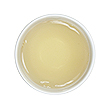
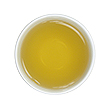
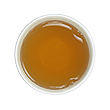
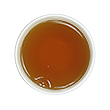
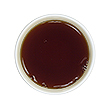
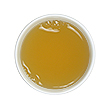
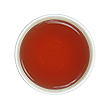
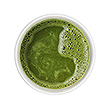
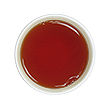
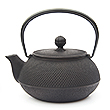
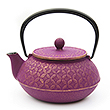
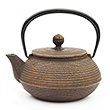

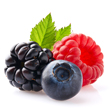
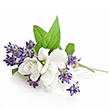
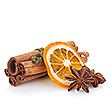
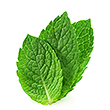
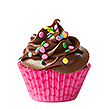

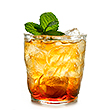
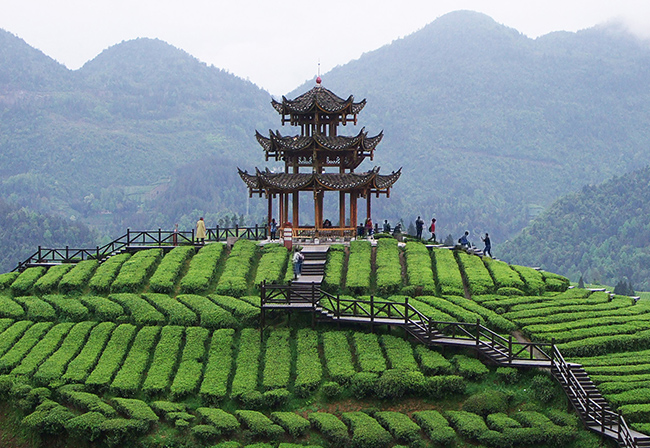
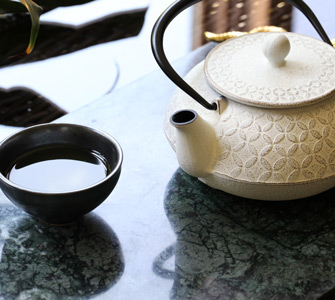
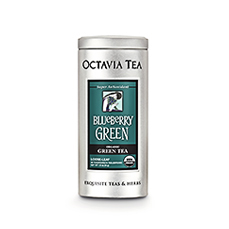
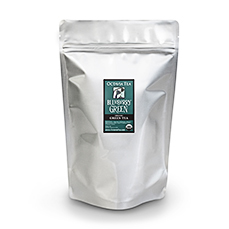
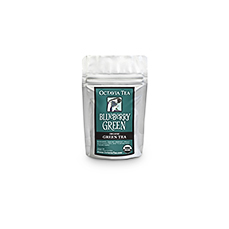
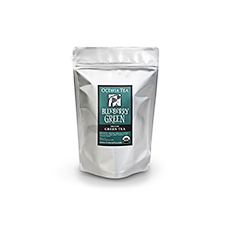
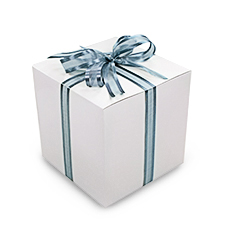
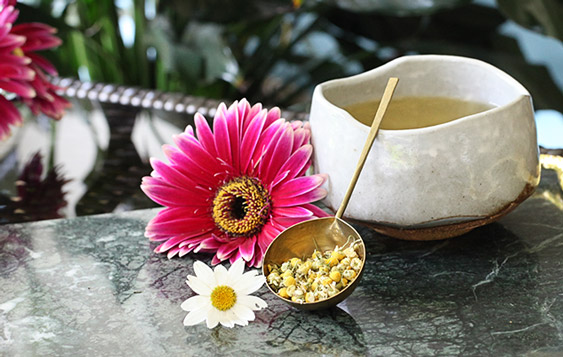







Octavia Tea Sign In
Create New Account